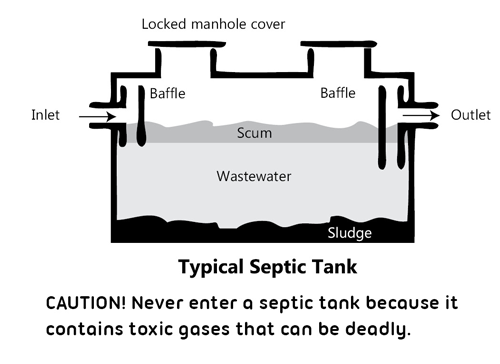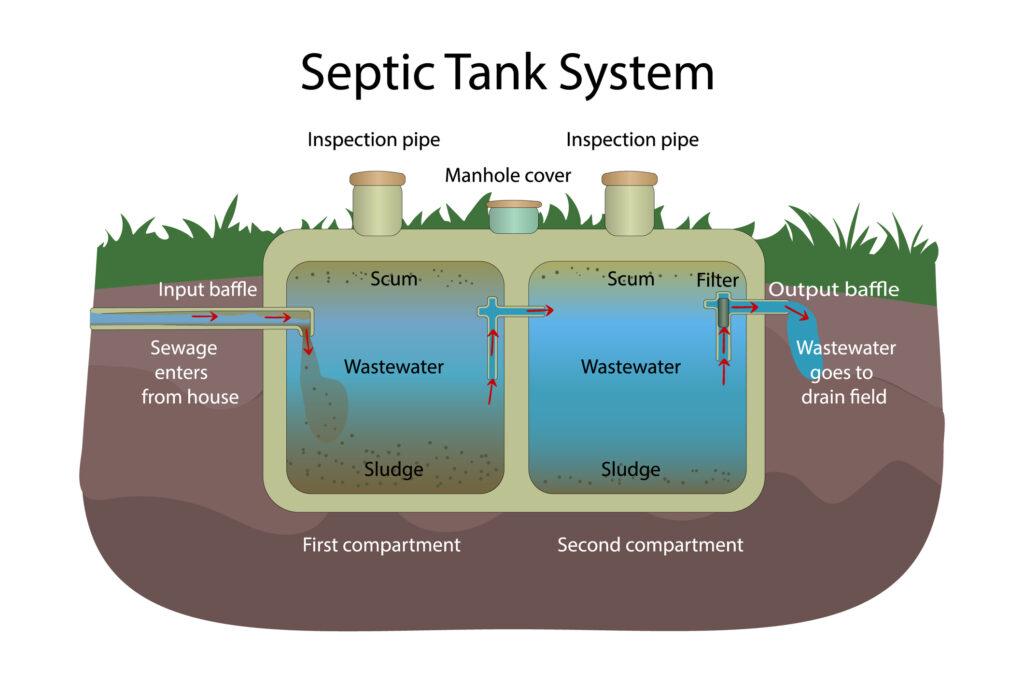Rural residents are typically not connected to the municipal wastewater system. That means that you'll need a domestic water treat facility to clean and dispose your wastewater. It is vital that owners of smaller properties or houses who don't have access to on-site disposal facilities put in one before anyone else does. There are many home septic tank options that accomplish the same task: Remove waste from your homes and eliminate harmful substances. Then, you can discharge pure water into the surroundings waters. Most costs depend upon size/capacity requirements- larger ones being able to reduce how often daily chores become necessary because of the less liquid generated per day than smaller models would require.
How Much Will A The Septic System Cost?
The traditional septic tank, which is no longer in use, is an old system. The United States can pay anywhere from $2,500 to $5K for a septic tank, without thinking about permits and the expense of piping your drain field. If budget isn't an issue, you may be interested in anaerobic or aerobic kinds of septic systems. These modern machines are known as "septic systems" and are able to be bought. While they can be costly but they're durable and will last many years. They also require little maintenance as there is no need to water them every few decades.
Aerobic systems need oxygen, which accelerates the decomposition process , and results in significantly cleaner wastewater than counterparts; in fact, this effluent is treated so efficiently that you can even make use of it to water your garden (provided there's no alternative source available). Anaerobic foods need less space since they use approximately 50% of the space of conventional systems. But, it comes with a high cost, starting at thirteen thousand dollars for 1000 gallons that are treated annually. See the most popular how do septic systems work for info.

How Much Does An Septic Tank Tank Cost?
Polyethylene or plastic septic tanks are the most cost-effective and light choice. A typical cost for 1000-gallon tanks is around eleven hundred bucks. However, leakage can cause problems in certain states. They have been banned in the US since cracked tanks can lead to expensive repairs. The tried and true concrete tank is a sturdy tank that will last for decades before needing replacement. There have been occasions when the tanks break. But the cracks are rarely severe. Fiberglass Septic systems are a low-cost alternative that homeowners can set up quickly and quickly. They are much lighter than plastic or concrete tanks and can be difficult to set up in tight areas. This eases the burden on your home and can result in higher quality construction all around.
What Do These All Mean To Me?
It isn't easy to understand the factors that influence your septic tank price. The first step to making a decision about your septic tank cost is to consider the various alternatives available and the amount each will cost. NexGen Septics' experts have simplified the process! We offer detailed explanations of everything, including soil preparation permits and the cost of maintenance. This is an important element in determining the price of new systems. Have a look at the best how a septic tank works for examples.

Types Of Septic Systems
It can be challenging to pick the best septic tank for your needs. The type you choose can impact the price of the system, as well as the treatment method used and how much space you have available to put it in. These are the two most popular kinds:
1.) Anaerobic Septic System
One of the best things about a septic system is that it doesn't require electricity to function. Anaerobic bacteria works within these systems to eliminate and digest waste from your home's sewer line until it is completely depleted. It is simple to install and will cost between $2k-5K depending on the requirements of your home. There isn't anything complicated involved therefore anyone who has performed any type of work in their home ought to feel confident giving this installation.
2.) Aerobic Septic System
Aerobic septic systems utilize aerobic bacteria to break down waste inside the tank. A motor and a timer are used in conjunction with the effluent to improve the process. This allows wastewater to be treated more effectively without permitting it to spill onto your lawn, or any other crop. These advanced toilets are less costly than pit toilets that are traditional and will require one tonne of waste per year.
Septic Tank Types
There are also three types available for the septic tank: concrete, gravel and plastic. In addition, the selection includes fiberglass-based tanks; this type of material is extremely lightweight, but tough enough for long-lasting use in harsh environments, such as those in farms, where it can be muddy or wet frequently because of irrigation systems that move water around. Concrete is another great option. Its weight is heavy and gives it stability, ensuring that rainwater doesn't cause your home to tip over. And finally, we come across these light yet sturdy plastic bags that you can find all over the place and are great if you are located near a city limit since urbanization has pushed us to live in tighter spaces more than we ever have before. See the top septic system how it works for recommendations.

Plastic Septic Tanks
Septic tanks are fantastic for managing waste however, you must ensure they last. Polyethylene is the least expensive and lightest septic tank, however they're likely to be damaged or cracked at some point. The plastics have developed to ensure they're more durable. But, these toilets can be restricted in some regions, like California. Prices for 1000-gallon models vary according to where they are installed.
Fiberglass Septic Tanks
Fiberglass septic tanks are light and simple to install. They also feature less algae growth than other kinds. They are also resistant to expanding and shrinking and prevents cracks from developing in the tank as time passes. This is unlike porous soils like clay-based systems. Fiberglass prices will vary depending on how large you are however, they typically cost between $1600 and $2000 USD for 1000 gallons to 1500 gallons. A choice with a larger capacity is available which will cost you around 50% to 100 percent.
Concrete Septic Tanks
Concrete septic systems are long-lasting and durable. The 1,000-gallon model will cost you around $1,200; the 1500-gallon model is around $1 800. Concrete tanks last on average of about 15 years. However, it's possible to make them last longer based on the way they are maintained.